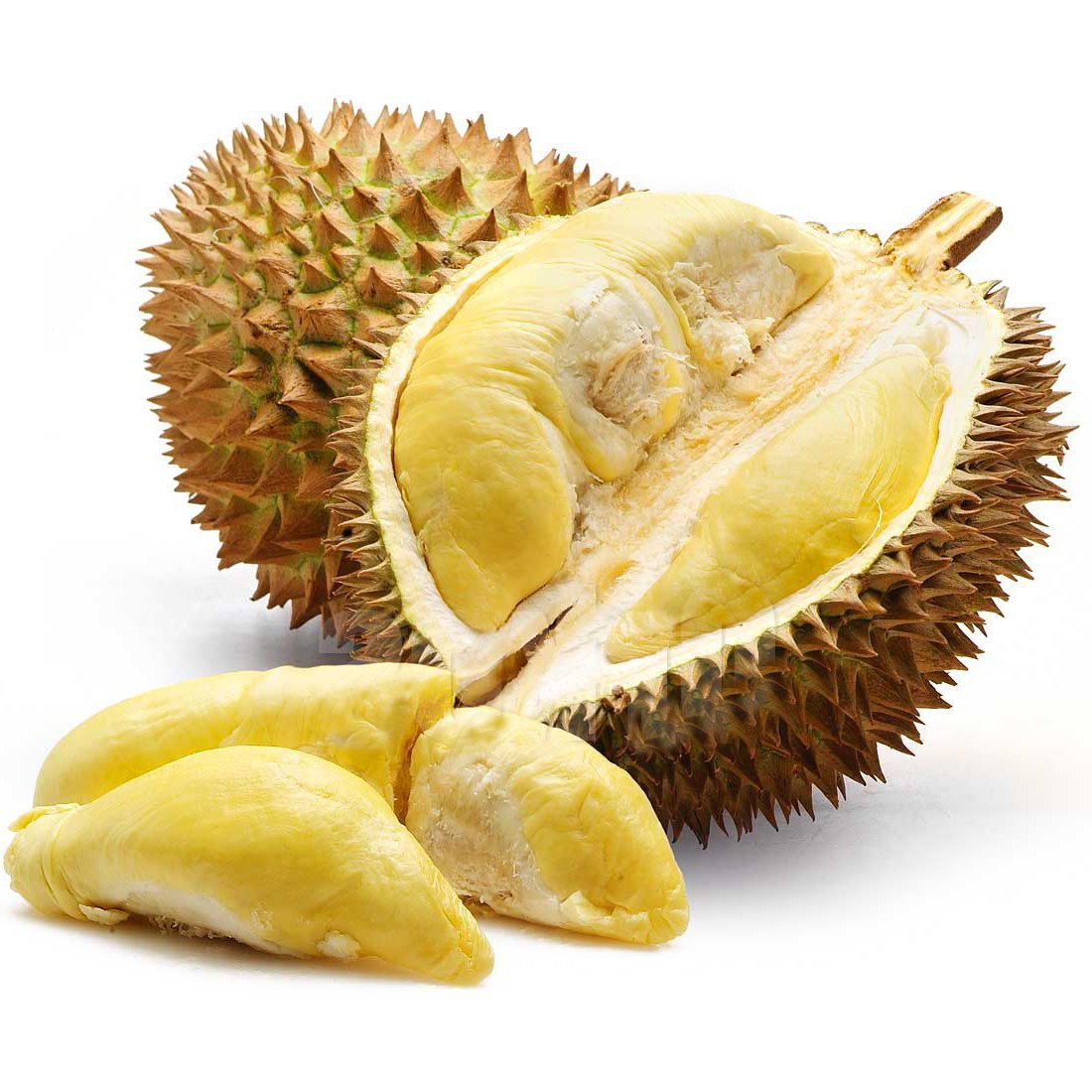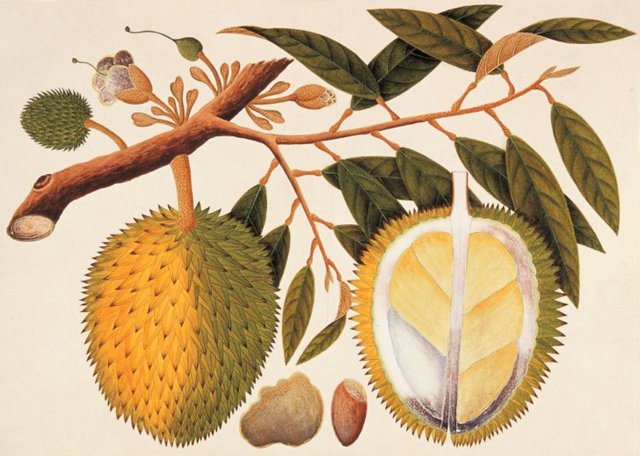know the durian plants
Hi as a steemit, knowing this durian crop is my first post for new use this steemit. This information may be useful.
Durian comes from Southeast Asia, especially Malaysia and Indonesia. In Thailand, durian has been developed in agribusiness very well. Meanwhile, in Indonesia the development of durian in agribusiness in special gardens is still limited.

Durian trees are large and the height can reach 30 m. The fruit is large and thorny. Durian fruit is often said to be king of fruit.
The location of the leaves facing on the stalk. Leaf blade long and pointed ends. The surface of the lower leaves is silvery glossy. Growth branches tend to up (vertical). However, the primary branch at the bottom of the tree tends to sideways (horizontally). Durian plants have strong root and deep root. Rooting like this is good for preventing slope erosion. Big flowers are in the form of bowls with stamens and crowns golden to red yellow. The flowers are perfect or herm aphrodites (one flower contains stamens and fertile pistils). Flowers come out singly or in groups on the primary branch to the secondary branch (twigs). The location of the flowers depends on the long stalk. Plants from seeds can bloom at the age of 8-15 years, while from grafting seeds at the age of 5-7 years. Flowers bloom (open) in the afternoon. Cross pollination through the aid of honey bats, but some beetles may also help to cross. Cross pollination by bats takes place at midnight. Pollination itself occurs between 5-10%. Ripe fruit can be harvested at 4-5 months after flowering. These plants generally bloom in September-November. Many seeds (between 1-40 seeds). Flesh wrap the seeds contained in the fruit room (juring). The flesh grows from a tissue called the arylus. Fruit shape round to oval and spiked pointed sharp. The fruit has 1-7 chambers. Each room there are 1-6 pieces (pongge). Each pongge contains one pith or seed.

Superior variety: More than 10 varieties (cultivars) durian has been removed and recommended for the development of production, including otong, kane, sunan, breadfruit, sitokong, petruk, and hepe. Each variety has its own advantages. Large seed durian cultivars above are generally small to deflated, except sijapang. The rootstock is very influential on the large seeds. Similarly, a source of pollen for pollination. Some varieties of durian. Each variety has its own advantages.
Usage: Fresh durian fruit flesh can be eaten fresh. The rest of the fruit can be made lempok (dodol) and tempoyak (pickled). An old but immature fruit can be made of durian flour. The wood is very good for building materials. Durian juice is used for the aroma of ice cream. On slopes or steep slopes, it is good to plant durian for soil conservation.
referensi by
http://www.sci-news.com/othersciences/chemistry/durians-pungent-odor-04548.html
https://www.pertanianku.com/mengenal-tanaman-durian/
thank you for dropping in my first post and continue to follow me at @afdhalulzaky
Nice
I think I've seen a similar kind of fruit here in Mexico :D
maybe that cactus: D